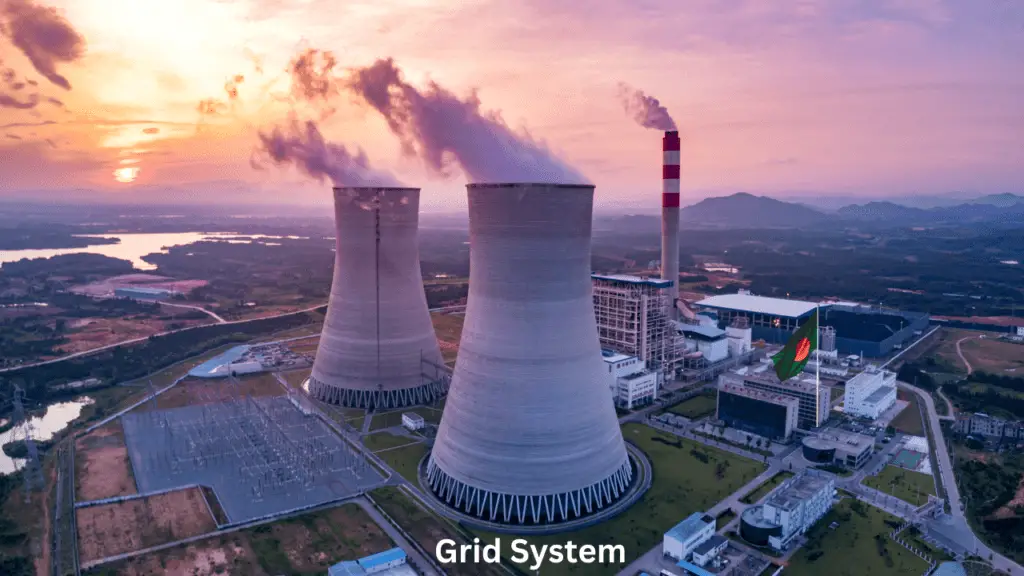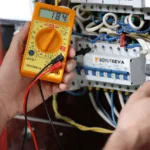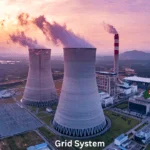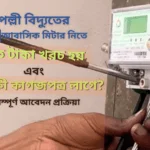Bangladesh Grid System Bangladesh’s power sector is an important part of the country’s economic and social development. An effective grid system is essential for the generation, storage, and distribution of electricity. At present, Bangladesh’s power supply system is developing rapidly, but some challenges remain with the grid system.
What is a grid system?
A grid system is an electrical transmission and distribution system that delivers electricity from power generation plants to consumers. It is made up of three main components:
Generation: Electricity is produced in power generating stations or power plants. These can be thermal, hydroelectric, nuclear, or solar power plants.
Transmission: The generated electricity is transported at high voltage. There is no loss of power by transporting electricity at high voltage. This is usually done by transmission lines, which carry electricity over very long distances.
Distribution: High-voltage electricity arriving through the transmission system is distributed using only local transformers and converted to a voltage suitable for users.
This system works together to provide stable and efficient power. A problem in one part can affect the entire system, so its stability and reliability are very important.
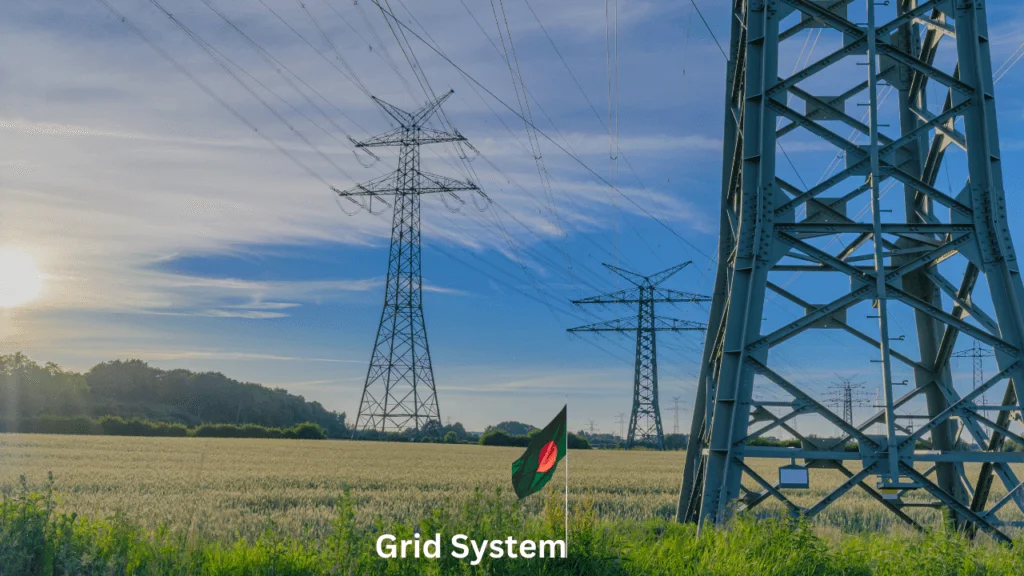
Table of Contents
Types of grid systems
Grid systems are mainly of three types, namely:-
1. Radial grid system: In this system, each feeder extends outward from the grid substation, and the distributor and service mains extend outward from the substation; that is, the substations are fed from one direction through a single feeder.
However, some limitations are also observed since such grid systems are very simple and have low initial costs.
2. Ring Main Grid System: In this system, two feeder grids extend outward from the substation, and the distributor and service mains extend outward from the substation. Each substation is supplied through two feeders, hence the name ring main grid system.
3. Interconnected Grid System: A grid supply system is a special type of interconnected network in which each feeder receives power from two or more generating stations or substations.
Grid systems can also be divided into several other categories, such as:
1. Based on the type of supply, grids are of two types, namely:-
- AC grid
- DC grid
2. Based on the type of line, grids are of three types, namely:-
- Single-line grid system
- Double-line grid system
- Triple-line grid system
Below are descriptions of some other grid systems:
1. National Grid : The National Grid is the country’s central electricity connection system, which is connected to various power generation plants and distributes electricity nationally.
Features:
- Power is collected and distributed from multiple power generation plants.
- Helps avoid power shortages at the national level.
- If a power shortage exists in one region, power can be supplied to another.
2. Smart Grid : A smart grid is a modern technology-based grid system that can automatically manage electricity and is capable of load balancing.
Features:
- Real-time power management.
- Automatically control power supply.
- Adjusting generation and distribution according to power demand.
3. Microgrid: A microgrid is a small-scale grid system that can independently supply electricity to a specific area or organization.
Features:
- It can provide power to isolated areas.
- Acts as a backup in emergencies.
- Suitable for using renewable energy.
What is a smart grid?
A smart grid is an advanced, technology-driven electrical grid system that uses digital communication and automation to monitor, control, and manage electricity flow more efficiently and reliably. Unlike traditional grids, which rely on manual processes and basic control systems, a smart grid incorporates real-time data, sensors, and smart meters to optimize energy generation, distribution, and consumption.
Key Features of a Smart Grid:
- Real-Time Monitoring: It can track real-time electricity usage and grid performance.
- Automated Control: Smart grids can adjust power flow based on demand and supply, reducing the risk of power outages.
- Energy Efficiency: They optimize the generation and distribution of electricity, improving overall efficiency and reducing energy waste.
- Integration of Renewable Energy: Smart grids can easily integrate renewable energy sources like solar and wind, making energy systems more sustainable.
- Demand Response: They enable dynamic control over electricity demand, balancing supply and consumption, particularly during peak hours.
- Enhanced Reliability: Smart grids can reduce downtime and improve the reliability of the power supply by detecting faults and rerouting electricity as needed.
Smart grids offer a smarter, more resilient, and efficient energy distribution system that benefits utilities and consumers.
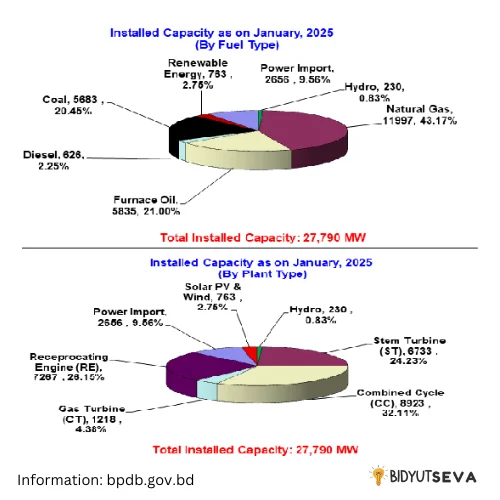
Requirements for Bangladesh Grid System
The importance of the grid system in meeting the growing electricity demand in Bangladesh is immense. The main reasons for this are:
- Continuity of power supply can be maintained.
- Uninterrupted power supply to industrial and commercial establishments can be ensured.
- Multiple feeding point facilities are available.
- The load factor and diversity factor of the power system can be improved.
- Load shedding can be reduced.
- The power supply to the customers can be kept on at all times.
- Electricity can be delivered to remote areas.
- Waste of electricity can be prevented.
- Maximum efficiency can be achieved.
- Generating stations can be repaired and maintained.
- Future expansion loads can be carried out, etc.
- The grid system greatly increases the efficiency and reliability of the entire power system.
Current status of Bangladesh grid system
Almost the entire electricity system in Bangladesh is part of the grid system. Currently, electricity is supplied to Bangladesh through the National Grid, which is operated by the Power Grid Company of Bangladesh (PGCB). The national grid voltage in Bangladesh is mainly 230 kV and 132 kV. The 230 kV line is called the super grid.
All centers in Bangladesh are interconnected through grid lines. The length of the country’s 230 kV grid line is 250 kilometers, and the length of the 132 kV line is 2207 kilometers. In addition, the line to Rajshahi, Ishwardi, Pabna, Woollapara, and Sirajganj is 169 kilometers long, and this line runs at a voltage of 66 kV.
- Installed Capacity of Power generation: 27,790+ MW (2025).
- No of Power Plant: 143
- Grid connectivity: 99% of the region is connected to electricity.
- Smart grid project: Under implementation
Including Captive Power, off grid Renewable Energy & Off grid HFO Total Installed Capacity (27,790+2,800+549+5) = 31,144 MW
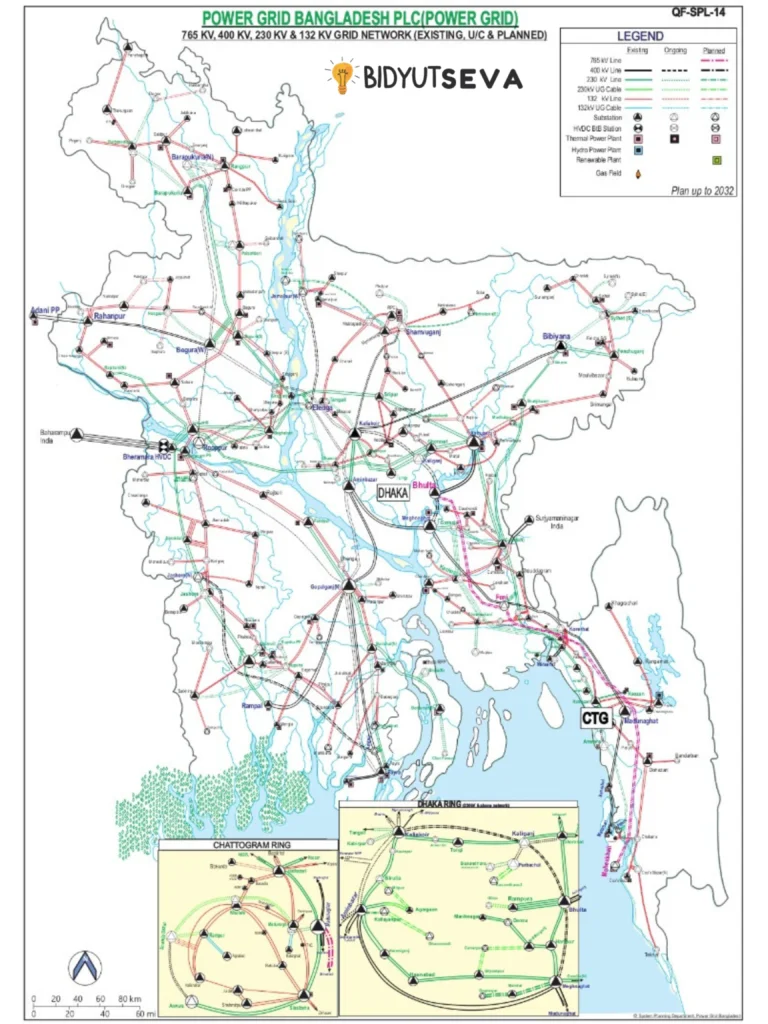
The main challenges of the grid system
The main challenges of Bangladesh’s grid system include:
- Load Shedding and Excess Demand: The growing electricity demand often exceeds the available supply, leading to load shedding in certain areas.
- Inadequate Transmission Lines: The existing transmission infrastructure cannot handle the growing electricity demand, limiting efficient power distribution.
- Dependence on Foreign Energy: Bangladesh relies on imported fuel, which makes the power sector vulnerable to external price fluctuations and supply disruptions.
- Damage Due to Natural Disasters: Frequent natural disasters, such as cyclones and floods, can damage the grid infrastructure and disrupt the electricity supply.
- Lack of Smart Grid Technology: The absence of modern smart grid systems limits the ability to efficiently manage and control electricity flow, especially during peak demand times.
Future development plans for the grid system
The Bangladesh government is taking various initiatives to improve the power grid system. Future development plans for Bangladesh’s grid system include:
- Launching smart grids: Introducing smart grids to enable real-time power management, automatic control, and better demand-response capabilities.
- Installing new power transmission lines: Expanding and upgrading transmission infrastructure to meet growing electricity demand and ensure better connectivity across the country.
- Adding renewable energy: Increasing the inclusion of renewable energy sources like solar and wind to diversify energy generation and reduce dependence on fossil fuels.
- Backup systems to reduce load shedding: Develop backup systems to reduce load shedding and ensure a continuous power supply, especially during peak demand or emergencies.
- Grid Expansion to Remote Areas: Extending the grid network to underserved and remote areas to provide uninterrupted electricity to all regions.
These initiatives aim to enhance the power grid’s efficiency, reliability, and sustainability, ensuring a stable and future-proof electricity supply for the nation.
A comprehensive picture of grid systems in developed countries
There are three types of grid systems in developed countries like ours, but the most advanced system is in Abu Dhabi. The electricity grid system in developed countries is very advanced, smart, and sustainable.
They ensure an uninterrupted power supply and pioneer the integration of renewable energy, digital control systems, and customer-centric services.
Common Questions and Answers (FAQs)
1. What is a grid system?
Answer is: A grid system is a connection system for delivering electricity from a power generation plant to a consumer. A grid system is essentially an interconnected network in which each feeder feeds power through at least two or more generating stations.
2. What type of grid is used in Bangladesh?
Answer is: Bangladesh mainly uses the National Grid, but smart and microgrids are gradually being added.
3. What is a smart grid?
Answer is: A smart grid is a modern system that can automatically control power supply and analyze data usage.
4. What are the ways to improve the grid system?
Answer is: The ways to improve the grid system are:
- Installation of new power transmission lines.
- Use of smart grid technology.
- Inclusion of renewable energy.
Conclusion
Bangladesh’s power grid system is on the path of improvement. However, more effective measures must be taken to address the power crisis. The use of smart grid technology and the addition of renewable energy will help improve the power sector in the future.
Bangladesh’s power grid system is evolving rapidly and plays a vital role in economic and social development. While the National Grid ensures widespread electricity distribution, challenges like load shedding, inadequate transmission lines, and reliance on foreign energy remain.
Smart grid technology, renewable energy integration, and improved transmission infrastructure are essential to overcoming these issues. With strategic advancements, Bangladesh’s power sector can achieve greater efficiency, reliability, and sustainability in the future.

